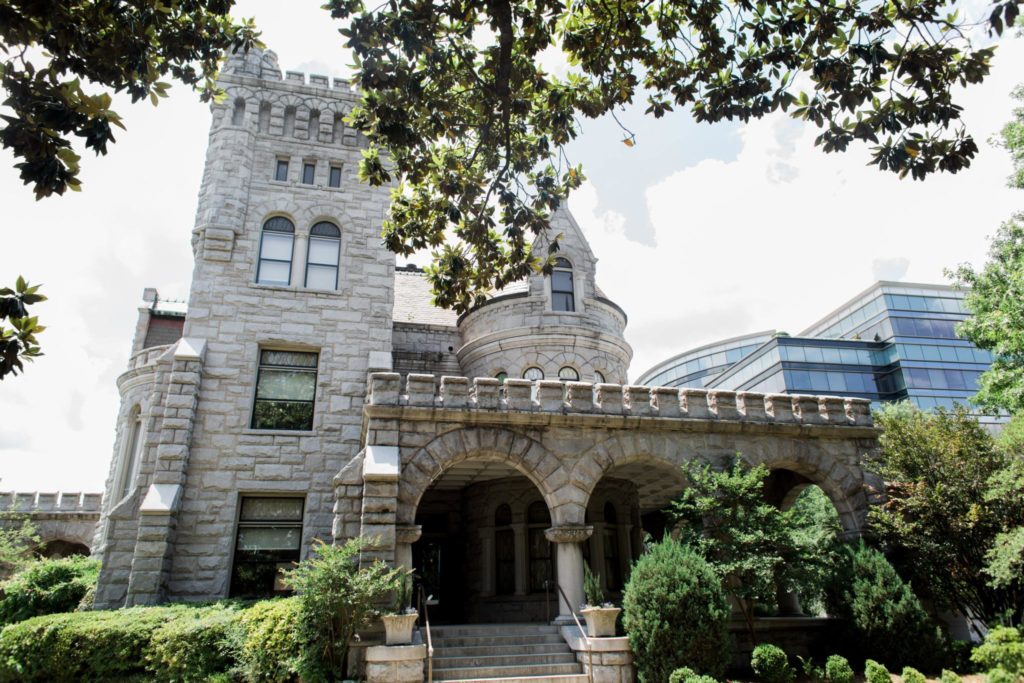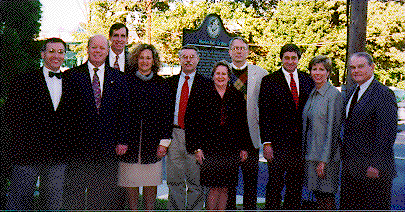In recognition of Preservation Month, this week’s #MarkerMonday highlights Rhodes Hall. In 1901, Amos G. Rhodes began accumulating land to build his residence on Atlanta’s historic Peachtree Street. Said to have been inspired by castles he saw while on a trip with his wife Amanda to the German Rhineland, Rhodes hired prominent Atlanta architect W.F. Denny II to design a home in the Romanesque Revival style. They began building in 1902, and two years later the the home called Le Rêve (the Dream) by Amos and Amanda Rhodes was completed.

https://www.rhodeshall.org/
It was constructed of Stone Mountain granite and is unique in its style partly because the expense of masonry made Romanesque Revival rare for residential houses. The stained glass windows depicting the rise and fall of the Confederacy were made by Von Gerichten Art Glass Company, which won four gold medals for their stained glass at the St. Louis Exposition in 1904. Rhodes Hall is also unique because the architect modified the style to accommodate modern technology—it included electricity, and the house featured over 300 light bulbs, a security system, and electric call buttons.
After the deaths of Mrs. (1927) and Mr. Rhodes (1928), their children donated the house and one of the 114 acres of land to the State of Georgia to be used for “historic purposes.” In 1930 it began operation as the State Archives building. In 1983 it became the headquarters of the Georgia Trust for Historic Preservation, which coordinated with the State of Georgia to restore Rhodes Hall.
Explore the links below to learn more about Rhodes Hall.
Georgia Trust “Rhodes Hall”
New Georgia Encyclopedia “W. F. Denny (1874-1905)”
The Georgia Historical Quarterly published articles related to historic preservation that can be accessed on JSTOR. If your library does not have access to JSTOR, you can go to www.jstor.org and create a free MyJSTOR Account.
THE ORIGINS AND FUTURE OF GEORGIA PRESERVATION
From Landmarks to Community: The History of Georgia's Historic Preservation Movement
THE FUTURE OF GEORGIA'S STATE HISTORIC PRESERVATION PROGRAM: A PERSONAL PERSPECTIVE

